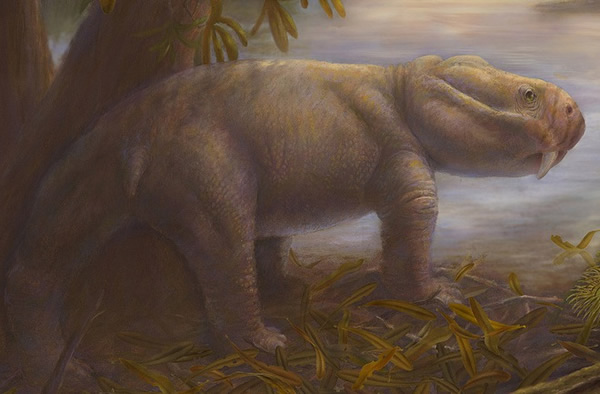Dinosaur Lineage Traced to Africa
Ten million years after the world's largest mass extinction, a lineage of animals thought to have led to dinosaurs took hold in Tanzania and Zambia, according to new research.
The study, published in the latest Proceedings of the National Academy of Sciences, reveals how the end-Permian mass extinction 252.3 million years ago permitted a significant reorganization of terrestrial animals living in the southern part of the supercontinent Pangea.
Out of this chaos emerged the dino predecessors, which likely ushered in the Dinosaur Age.
There were losers, such as fat lizard-looking Dicynodon, which sported a short tail and a turtle's head. It completely bit the dust after the huge extinction event, which led to the disappearance of 90 percent of all life on the planet.
On the winners' side were silesaurs, which were plant-eaters very closely related to dinosaurs.
A Dicynodon recreation.
"In Tanzania, the main silesaur that we find is called Asilisaurus kongwe," co-author Kenneth Angielczyk told Discovery News. "Asilisaurus was about the size of a medium dog, like a golden retriever, and they tended to have long thin limbs."
Yet another fossil find was Nyasasaurus parringtoni, a Labrador retriever-sized animal with a 5-foot-long tail.
"Nyasasaurus is either the oldest known dinosaur or the closest known relative of dinosaurs, but we can't completely rule out either option because the material is rather fragmentary," said Angielczyk, who is Associate Curator of Paleomammalogy at the Field Museum of Natural History.
Angielczyk and his colleagues unearthed these creatures over the course of seven fossil-hunting expeditions in Tanzania, Zambia and Antarctica. The researchers created two "snapshots" of four-legged animals about 5 million years before the mass extinction event and 10 million years after it.
The cause of the great die-off remains a mystery, with intense volcanic activity, a meteorite strike and extreme global warming all being possible candidates.(Apr 29, 2013 03:00 PM ET // by Jennifer Viegas)












